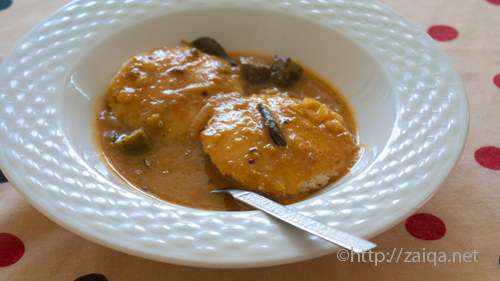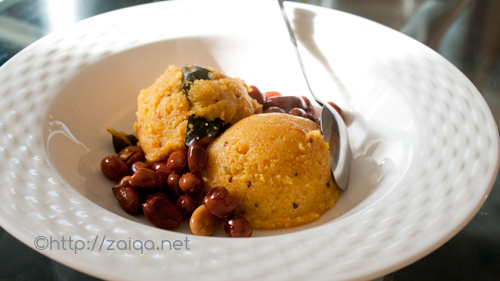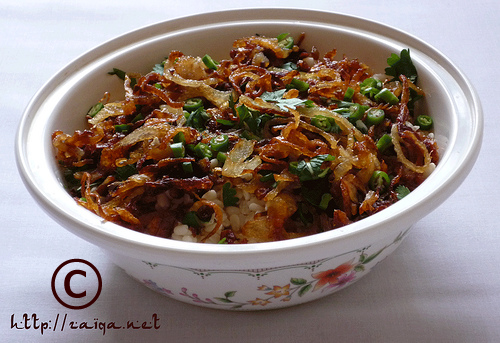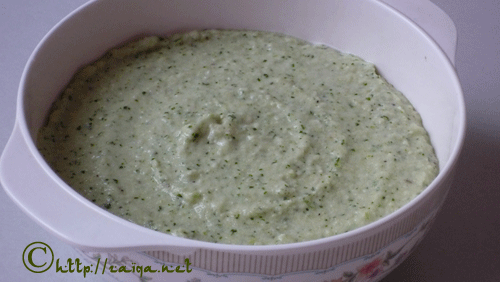I simply adore mint leaves. Its clean citrusy taste, refreshing aroma and artistic curly rich green colored leaves, all make me fall in love with it over and over again. I wait for spring/summer time every year so as to plant mint outdoors in pots. It grows easily and vigorously once established and provides me with fresh leaves all summer.
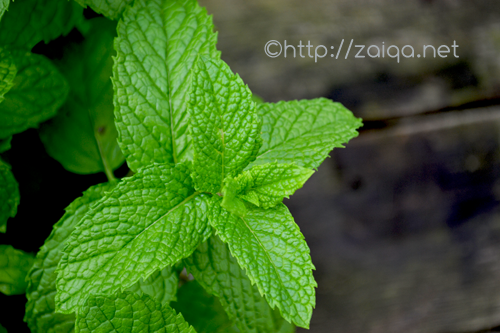
Mint from my garden
The Arabic name for mint is ‘nanaa’. The mint from the holy city of Madinah is famous for its strong and wonderful aroma. During visits to Madinah one can see people selling fresh mint leaves at every corner. The mint is kept fersh covered under wet hessian cloths. Mint that doesnt get sold is dried under the hot sun and sold. People of Madinah enjoy mint as a mouth refreshner, or in teas or in their food.
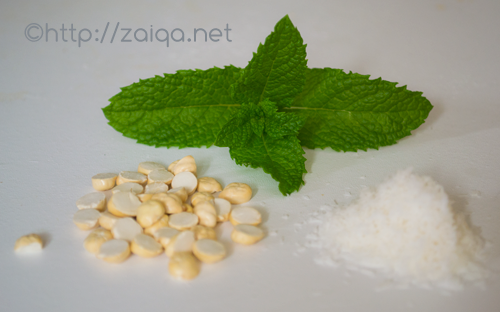
Clockwise from top: Mint leaves, Dessicated Coconut, Phulay Chane
The below verison is a mild chutney with use of phulay chane and coconut in it. I enjoy this chutney along with idli, dosa, evening snacks, or as a dipping sauce for sandwiches.
Pudina aur Khopra ki Chutney – Mint and Coconut Chutney
Phulay Chane – 1/8 cup
Dessicated Coconut/Khopra – 1/4 cup
Roasted Cumin seed/Zeera powder – 1/4 tsp
Small Green Chillies/Hari mirch – 4-5, chopped
Tamarind – walnut sized seedless ball (or) Lemon/Lime juice – 2 tbsp
Fresh Mint leaves/Pudina – 1 cup
Salt – to taste
Ginger – 1/4 inch piece
Garlic – 2 pods
Tempering/Baghaar:
Canola oil – 2 tbsp
Mustard seeds/Rai – 1/2 tsp
Dried red chillies/Baghaar ki mirch – 2, each broken into small pieces
Curry leaves – 4-5, chopped

Method:
1. In a blender, add the first nine ingredients. Pour in a little bit of water to aid in the grinding process and grind until smoothly pureed. Pour the prepared chutney into a serving bowl.
2. Prepare baghaar/tempering: In a pan at medium high heat, pour oil and as soon as it warms up add the mustard seeds, broken dried red chillies and chopped curry leaves. Immediately remove from heat and pour this baghaar hot and hissing into the chutney and mix well. Serve along with your favorite snacks. Store the left over if any in the refrigerator for upto a week.
On a different note, Megha from the ‘Food Food Maha Challenge Muqabla’ show that will be telecast on Food food channel had contacted me as they are looking for participants. She says:
“The show is about the competition between male and female cooks and Madhuri Dixit willl be representing the female cook and Sanjeev Kapoor will represent the male cook.The judge of the show is Mr. Sanjeev Kapoor . If any one is interested you can call on 02242769017 between 11 am to 6 pm.
The auditions dates are:
8th July Mumbai
10th July Nagpur
14th July Delhi
17th July Kolkata
20th july Hyderabad
You can also drop a mail at foodfood.mahachallengemuqabla@gmail.com”
This is a great opportunity to participate in a cooking show. If any one is interested, do contact her.
Luv,
Mona
